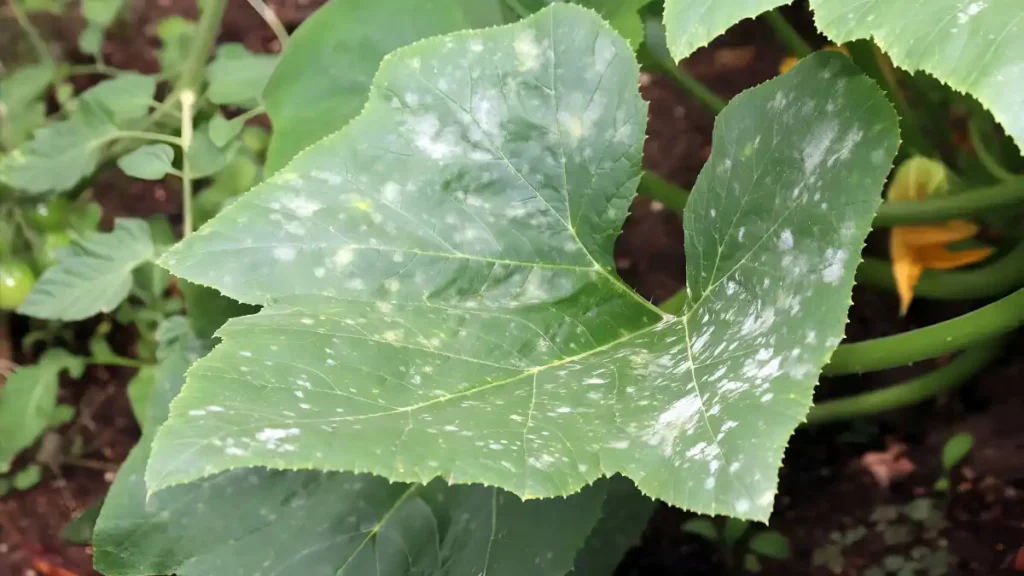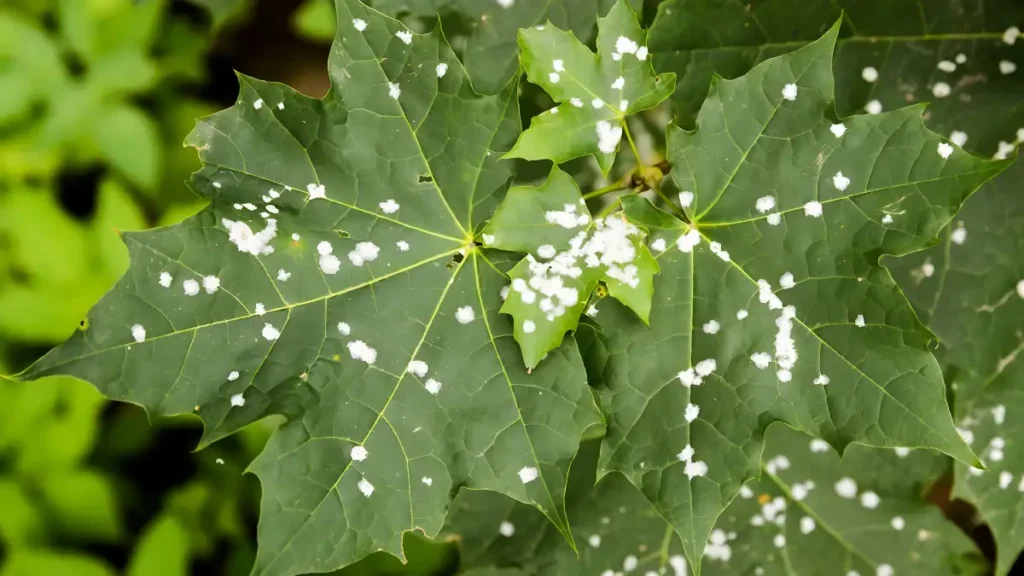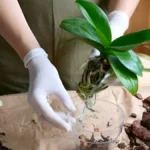A fungus called white spots on leaves damages several crops, especially brassicas like canola, kale, and cabbage. When a downy leaf spot first appears, it looks tiny, with pale green spots on the upper surface of the leaves and white, fuzzy patches on the underside. If not handled appropriately, it might result in a large loss of crops. The upper sides of the leaves develop chlorotic, or yellowish blotches that eventually turn brown, as the downy spot gets bigger. To avoid white spots on plant leaves, use the following tips.
What causes white spots on plant leaves:
Pseudocercosporella capsellae is the fungus that causes white leaf spots on plants. Here’s how to recognize it.
Identifying white spots on leaves:
- Initially, leaves may develop white patches. These lesions, which typically measure 1-2 mm in diameter and may have a brown or dark border, commonly occur around the margins of leaves. Downy mildew may be mistaken for the lesions.
- Large purple to grey-speckled stem and pod lesions are the signs of grey stem disease, which manifest later in the canola crop’s growth. The patches may combine to produce larger, asymmetrical lesions as the condition worsens.
- During harvest, some plants may be entirely discolored, and the entire field may turn purple or grey. The patches may disappear and the afflicted areas may turn necrotic. Lesions appear on lower leaves in the early summer after infection.
- Most often, the illness appears on the lower leaves and spreads upward during cool, rainy weather. Leaves with severe infection may turn yellow and drop off early. Usually, seeds do not spread the illness, a broad variety of cruciferous weeds are hosts to the disease.
Learn about how to get rid of white spots on plant leaves:
A fungus called white leaf spot attacks many types of plants, including vegetables. This article describes how to prevent, manage, and treat white spots on leaves.
White spots on plant leaves treatment
Infections with diseases
To stop the fungus from spreading, routinely pick and discard infected leaves. One of the most frequent causes of white spots on plant leaves is fungal diseases, which include powdery mildew and other fungi. Another common ailment that causes white spots is downy mildew.
Enhance air circulation
Maintain adequate plant spacing to improve air circulation, and water plants from the base rather than the top to reduce leaf wetness, promoting fungi growth. Plants should be sufficiently spaced to allow for appropriate air circulation. This could aid in stopping outbreaks in the future.

Fungicide therapy
Fungicides are currently the most effective technique to treat powdery mildew. generally, mancozeb, copper-based fungicides, or chlorothalonil are used as active components. As far as timing and application rates are concerned, follow the manufacturer’s guidelines. Before the illness gets worse, use fungicides early in the growing season.
Healing with nutrients
Consider doing soil tests to find out which nutrients are deficient if it’s a nutrient problem. Use a balanced fertilizer that includes a variety of vital nutrients if you are unsure of which ones are missing from your plant. Choose varieties with resistance. Refrain from yearly planting of the same vulnerable plants in the same location.
Insect destroyer
Upon first inspection, it appears to be white and fuzzy. The presence of insects is another factor contributing to white leaf spots, but, as you examine the plant leaves more closely. Mealybugs are one example; their white, grainy covering may initially lead one to believe that the insects are fungi, and they frequently gather in clusters that resemble white mold. Use neem oil or other organic therapies, such as pesticides, to address insect-related issues. Until the issue is fixed, isolate the impacted plants.
Conclusion:
The fungus Pseudocercosporella capsule is the source of white spots on plant leaves, which usually appear as tiny, white, or grayish dots on the leaves. Over time, these spots may combine and result in more extensive tissue damage. The chance of these issues can be reduced by taking preventive actions such as regular feeding, sufficient hydration, and appropriate spacing.
Certainly! If you’d like to learn more, please consider following our WhatsApp Channel: Harvest Gardening
A frequently asked questions:
Q1. How to remove the tomato white leaf spot?
A2. Apply a fungicide made especially for tomato plants after removing any diseased leaves. Through the use of crop rotation, adequate ventilation, and dry foliage maintenance.
Q2. How to treat white spots on shamrock plants?
A2. Usually, fungal infections are the source of white patches on shamrock plants. Maintain adequate air circulation, refrain from overwatering, and keep the leaves dry to prevent it. To address white spots, spray a fungicide designated specifically for powdery mildew and remove any leaves that are infected.
Q3. What are the white spots on plant leaves?
A3. Pests like spider mites, mineral shortages, and fungal illnesses like powdery mildew are frequently the causes of white patches on plant leaves. For the right course of treatment, the precise cause must be determined.
Q4. What causes white spots on plant leaves outdoors?
A4. Outdoor fungal infections, such as powdery mildew, are frequently responsible for white spots on plant leaves since they like warm, dry weather.
Q5. How can I prevent white spots on plant leaves indoors?
A5. Maintain adequate air circulation, refrain from overwatering, and keep the humidity levels around your plants low to prevent white spots.



